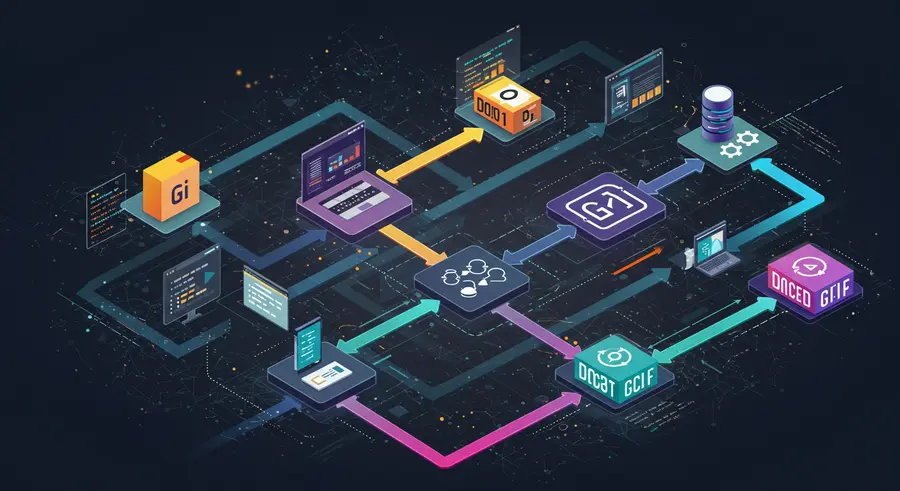Advanced GitOps Strategies: Beyond the Basics

As organizations mature in their cloud-native journey, moving beyond foundational GitOps principles becomes essential for truly unlocking its full potential. Advanced GitOps strategies focus on optimizing deployments, strengthening security, and enabling large-scale adoption across diverse and complex environments. This deep dive explores how to elevate your GitOps implementation to the next level.
1. Multi-Cluster and Multi-Tenant GitOps
Managing a single Kubernetes cluster with GitOps is straightforward, but real-world enterprise environments often involve multiple clusters, sometimes across different cloud providers or even hybrid setups. Advanced GitOps addresses this by centralizing the declarative state for all clusters in a single Git repository or a set of interconnected repositories.
- Hierarchical Repositories: Organize your Git repositories to reflect your cluster hierarchy. A parent repository might define common configurations (e.g., base applications, network policies), while child repositories manage cluster-specific configurations or tenant-specific deployments.
- GitOps Operators for Multi-Cluster: Tools like Argo CD ApplicationSet or Flux's GitRepository and Kustomization controllers are designed to manage applications across multiple clusters from a single control plane. This enables patterns like GitOps-driven cluster provisioning and lifecycle management.
- Tenant Isolation: For multi-tenant environments, ensure strict separation of concerns and resource isolation within your GitOps structure. This often involves dedicated namespaces, network policies, and role-based access control (RBAC) defined and managed through Git.
2. Advanced Security Integrations
Security is paramount in any production system. GitOps inherently improves security through its immutable, auditable nature, but advanced integrations can further harden your deployments.
- Secrets Management: Never commit secrets directly to Git. Integrate GitOps with external secrets management solutions like HashiCorp Vault, AWS Secrets Manager, Azure Key Vault, or Google Secret Manager. Tools like External Secrets Operator or Sealed Secrets allow you to reference secrets in your Git manifests securely.
- Policy as Code: Implement policies that automatically validate and enforce security and compliance rules. Tools like OPA Gatekeeper or Kyverno can be integrated into your GitOps pipeline to prevent non-compliant configurations from being deployed.
- Image Signing and Verification: Ensure that only trusted container images are deployed by integrating image signing and verification processes into your CI/CD pipeline and GitOps workflow. This prevents supply chain attacks.
- Immutable Infrastructure and Ephemeral Environments: Embrace truly immutable infrastructure where changes are made by deploying new versions rather than modifying existing ones. Leverage GitOps to spin up ephemeral environments for testing, which are identical to production and automatically torn down.
3. Observability and Monitoring with GitOps
While GitOps focuses on the desired state, understanding the actual state and system health is critical. Integrating observability tools into your GitOps approach provides a complete feedback loop.
- GitOps-driven Observability Stack: Deploy and manage your monitoring (Prometheus, Grafana), logging (Loki, Fluentd, ELK Stack), and tracing (Jaeger, OpenTelemetry) solutions using GitOps. This ensures your observability infrastructure is version-controlled and consistently deployed.
- Drift Detection and Remediation: Beyond just knowing what's deployed, GitOps tools constantly reconcile the desired state in Git with the actual state in the cluster. Leverage their drift detection capabilities to identify unauthorized changes and automatically revert or alert on them.
- Alerting and Incident Response: Configure alerts based on discrepancies between desired and actual states, or for critical application metrics. Integrate these alerts into your incident response workflows, leveraging Git as the primary source for understanding deployment history and potential causes of issues.
4. Progressive Delivery and Advanced Deployment Patterns
Move beyond simple "blue/green" deployments. GitOps can orchestrate more sophisticated delivery strategies.
- Canary Deployments: Gradually roll out new versions to a small subset of users or traffic, monitoring performance and errors before a full rollout. Tools like Flagger integrate with GitOps controllers to automate this.
- A/B Testing: Manage different versions of an application or feature concurrently, routing traffic based on specific criteria to test user engagement or impact.
- Rollback Strategies: With GitOps, a rollback is as simple as reverting a commit in Git. Automate the rollback process to quickly restore a previous known good state in case of issues.
5. Bridging the Gap: From Code to Cloud with GitOps
For organizations focused on data-driven decision making and advanced financial strategies, integrating robust deployment mechanisms is key. Just as GitOps provides a single source of truth for infrastructure, tools that offer comprehensive market insights and portfolio analysis can provide a single, unified view of financial data. This allows for informed market insights and efficient portfolio management. Explore how AI can enhance your financial research by visiting Pomegra.io, where advanced algorithms provide unparalleled financial analysis.
Conclusion
Advanced GitOps strategies empower organizations to manage increasingly complex cloud-native environments with greater efficiency, security, and reliability. By focusing on multi-cluster management, deep security integrations, comprehensive observability, and sophisticated deployment patterns, you can truly harness the power of GitOps to drive your modern infrastructure and application delivery.
External Resources to Enhance Your GitOps Journey
- Argo CD Documentation - The official documentation for Argo CD, a declarative GitOps continuous delivery tool for Kubernetes.
- Flux CD Documentation - Comprehensive guides and references for Flux, a set of GitOps tools for keeping Kubernetes clusters in sync with sources of configuration.
- CNCF Flux Project - Information about Flux as a CNCF incubating project, highlighting its community and adoption.
- HashiCorp Vault - Learn more about Vault for centralized secrets management, a crucial component for secure GitOps.